Is your heart ready for adventure? Are you ready to go to a place where you’ve never gone before? No more with the vacations to Niagra Falls, Grand Canyon, or Disney World. It’s time now to venture to the open plains of Africa and go to the Maasai Mara.
The Maasai Mara is a large national reserve. According to the Maasai Mara National Reserve, they state they “host over 95 species of mammals and over 570 recorded species of birds.”
You will see everything from birds that fly in the air to the mighty king of the jungle! We’re sure you’ve heard of the “big five” in Africa. But what about the “big nine”? Let’s dig into the location, history, and safari options that the Maasai Mara has to offer! And then, after that, we can find out about the mysterious “big nine.”
Location of the Maasai Mara National Reserve
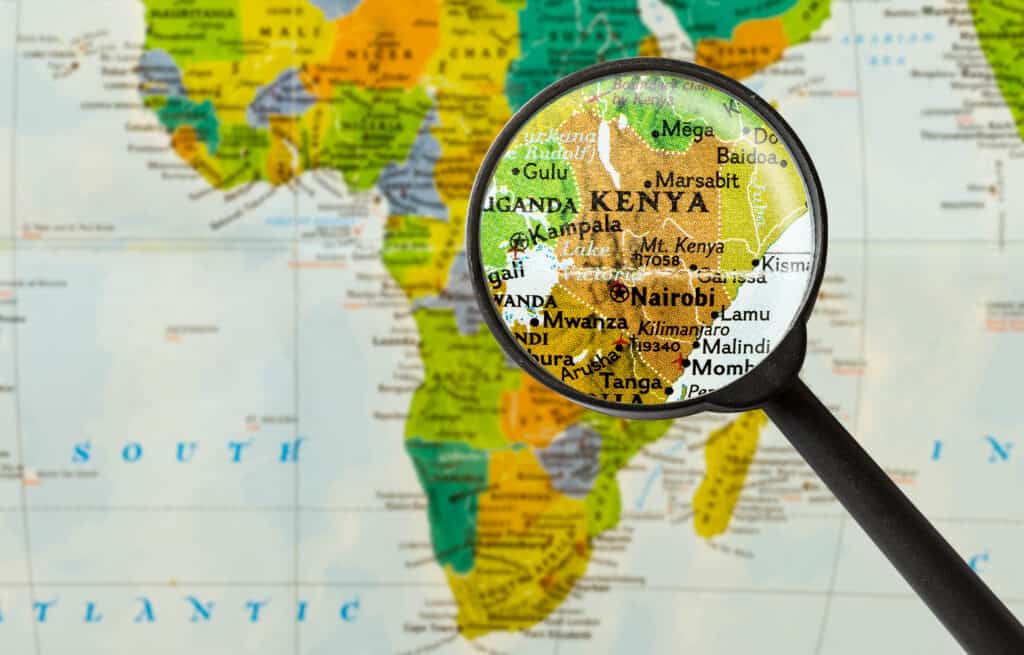
Kenya is in East Africa.
©iStock.com/naruedom
It may be easy to confuse Kruger National Park with the Maasai Mara. However, they are in two different locations. Kruger National Park is in Southern Africa. Whereas, the Maasai Mara, also commonly known as Masai Mara, is located in Kenya, which is in East Africa.
According to the Maasai Mara website, they state that the “Maasai Mara National Reserve stretches 1,510 sq km (580 sq miles) and raises 1,500-2,170 meters above sea level. Add the conservancies, and the area is at least twice the size.”
History of the Maasai Mara National Reserve
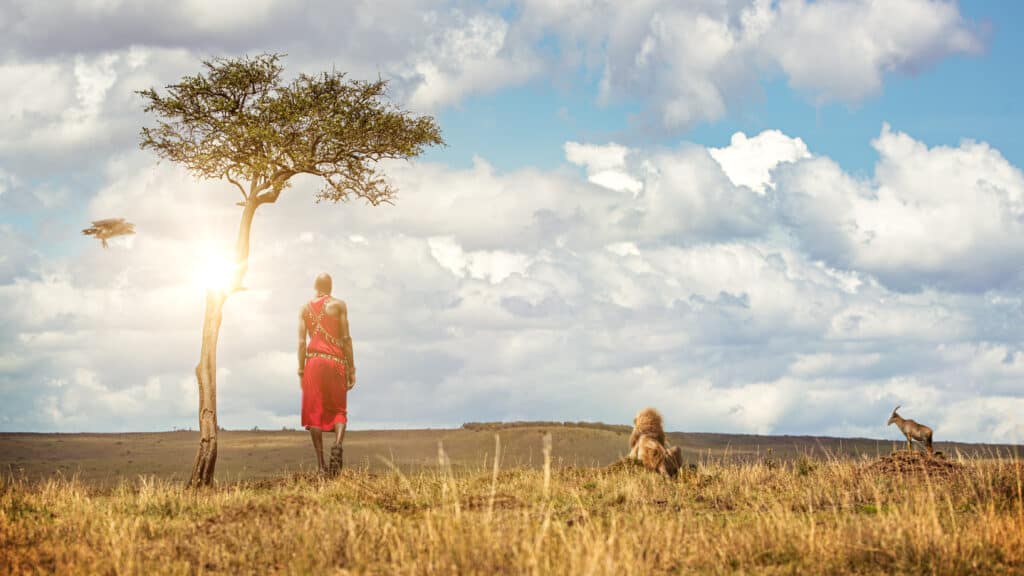
The Maasai population is estimated to be 900,000.
©GoodFocused/Shutterstock.com
The Maasai Mara was established just 62 years ago in 1961. This wildlife sanctuary has been a home to animals who needed protection for over 50 years, which is something to be proud of.
According to the Masai Mara, “The Maasai people have always relied on their land to feed their cattle and to provide for their families. Thanks to the establishment of the reserve as a protected area for the conservation of wildlife and wilderness and the areas designated as conservancies, the Maasai can sustain their way of living and improve their quality of life.”
Safari Options in the Maasai Mara National Reserve

There are 20 safari options to choose from below.
©Martin Mecnarowski/Shutterstock.com
If you’re looking for a vacation that is different than the same old theme park vacation, then the Maasai Mara is right for you. This is the way to get an authentic experience in a land that houses so many incredible animals.
There are a variety of different safaris that you can book while in the Maasai Mara. Let’s take a look at what they have to offer!
- 6-Day Mt Kilimanjaro Meets Masai Mara Mid-Range Safari
- 4-Day Budget Safari to Masai Mara and Lake Nakuru
- 3-Day Bigmark Masai Mara 4×4 Jeep Luxury Safari
- 11-Day Kenya off the Beaten Track
- 7-Day Amboseli/Lake Naivasha/Lake Nakuru & Mara Safari
- 3-Day The Famous Mara – Luxury
- 3-Day Mid-Range Masai Mara Safari – Mara Sopa Lodge
- 9-Day Best Kenya Safari Adventure
- 3-Day Adventure in Masai Mara
- 5-Day Masai Mara/Nakuru/Naivasha Group Camping Safari
- 3-Day Mara Chui Joining Group
- 3-Day Budget Safari to Masai Mara National Reserve
- 3-Day Masai Mara Join-in Safari with a Landcruiser
- 3-Day Wildebeest Migration Joining Budget Safari Offer
- 3-Day Taste of Mara Safari
- 4-Day Masai Mara-Lake Naivasha Hell’s Gate Adventure
- 9-Day Kenya Endless Plains – Man Eater Lions of Tsavo
- 7-Day Amboseli Naivasha Nakuru Masai Mara Luxury Safari
- 3-Day Maasai Mara Classic Safari
- 7-Day Safari to Amboseli, Naivasha & Masai Mara
So, as you can see, whether you’re looking for a short three-day tasting of this enormous land or if you’re looking for an eleven-day deep trek in the land, there is something for everyone!
Animals to See in Maasai Mara National Reserve
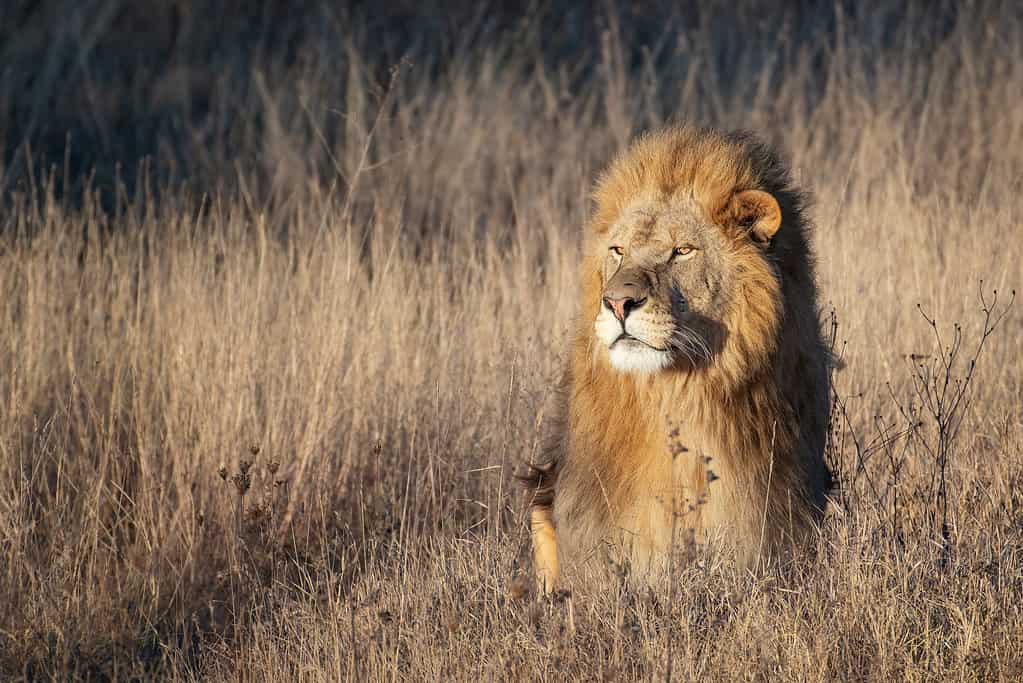
Lions can run up to 50 miles per hour.
©MriyaWildlife/iStock via Getty Images
The Maasai Mara seems to compete here with the Kruger National Park in South Africa. The Kruger National Park has their famous “Big Five” of animals that are seen there. Those animals are lions, leopards, elephants, rhinos, and buffalos.
Well, the Maasai Mara takes one step further, and they are trying to create the “Big Nine.” Their “Big Nine” consists of those in the “Big Five” and then the following four.
Head on over to the Kruger National Park page and read about the big five in detail. But, for the Maasai Mara, let’s look at the rest of the four animals there (giraffes, cheetahs, hippopotami, and zebras.)
Giraffe (Giraffa camelopardalis) Facts
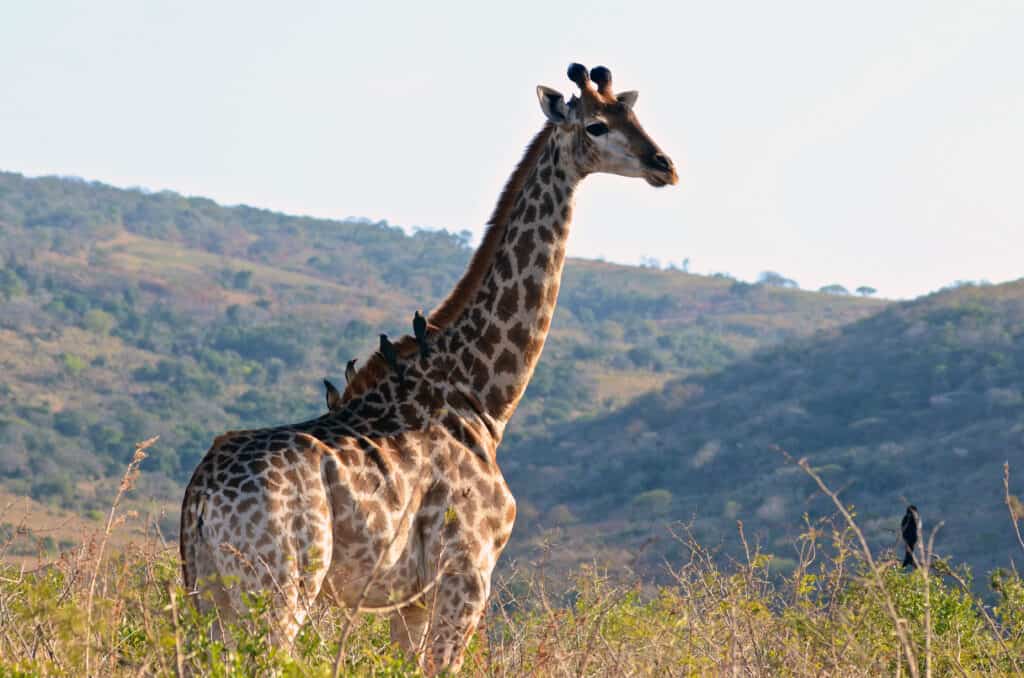
The
giraffe
can run up to 30 miles per hour.
©Slow Walker/Shutterstock.com
Giraffes (Giraffa camelopardalis) of the genus Giraffa can be found in Africa. It is estimated that there are as little as 8,660 giraffes left in this world. This makes their status to be considered extremely endangered.
The giraffe is a mammal known for its beauty. It is brown, red, black, white, and tan in appearance. However, what they are most well known for is the fact that they are the tallest land animal! Giraffes can weigh anywhere from 1,200-4,200 pounds (550-1,930 kilograms), and they can reach amazing heights of 13-20 feet (4-6 meters)! As we can see, it’s not difficult to imagine they would be the tallest in the land.
Giraffes are herbivores who eat things such as leaves, fruits, seeds, and grass. They love to also eat from the acacia tree.
Cheetah (Acinonyx jubatus) Facts
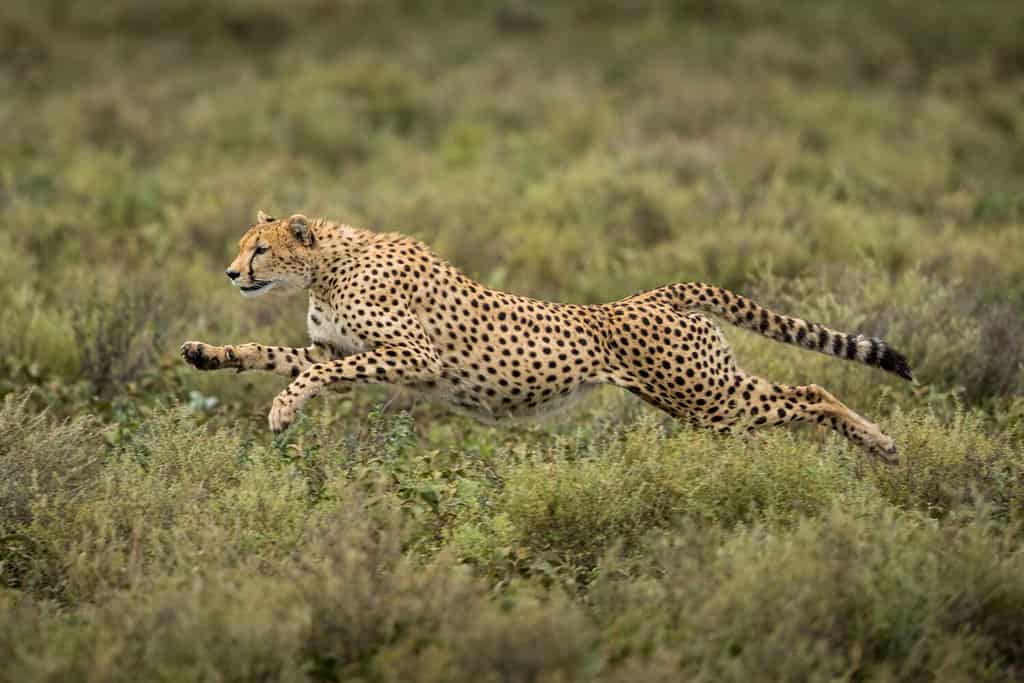
The cheetah can reach speeds of 70 miles per hour.
©Danita Delimont/Shutterstock.com
Cheetahs (Acinonyx jubatus) of the genus Acinonyx are located in Africa and Asia. There are very few cheetahs left in consideration of the population of other animals. There are estimated to be 8,500 cheetahs left. Their conservation status is considered vulnerable.
The cheetah is a mammal that weighs anywhere from 88-140 pounds (40-65 kilograms). They also reach between 45-53 inches (115-136 centimeters.)
For all their stealth, strength, and hunting capabilities, none of these are what this animal is most well known for. This land predator is best known for his title of being the fastest land animal alive! These animals can reach amazing speeds on land of 70 miles per hour. This makes them a dangerous predator in Africa and Asia, as no other land animal can reach these speeds. Making it almost a sure thing that the cheetah will be able to catch any prey.
Cheetahs are carnivores. According to the Australian Museum, a carnivore is “an animal that feeds on other animals. Carnivores come in many shapes in sizes, but they often have some similarities. Most carnivores have relatively large brains and high levels of intelligence. They also have less complicated digestive systems than herbivores.”
As carnivores, they will eat prey such as gazelle, wildebeest, and hare. All of these animals listed are extremely fast animals on land. However, as we know, the cheetah is faster.
Hippopotamus (Hippopotamus amphibius) Facts
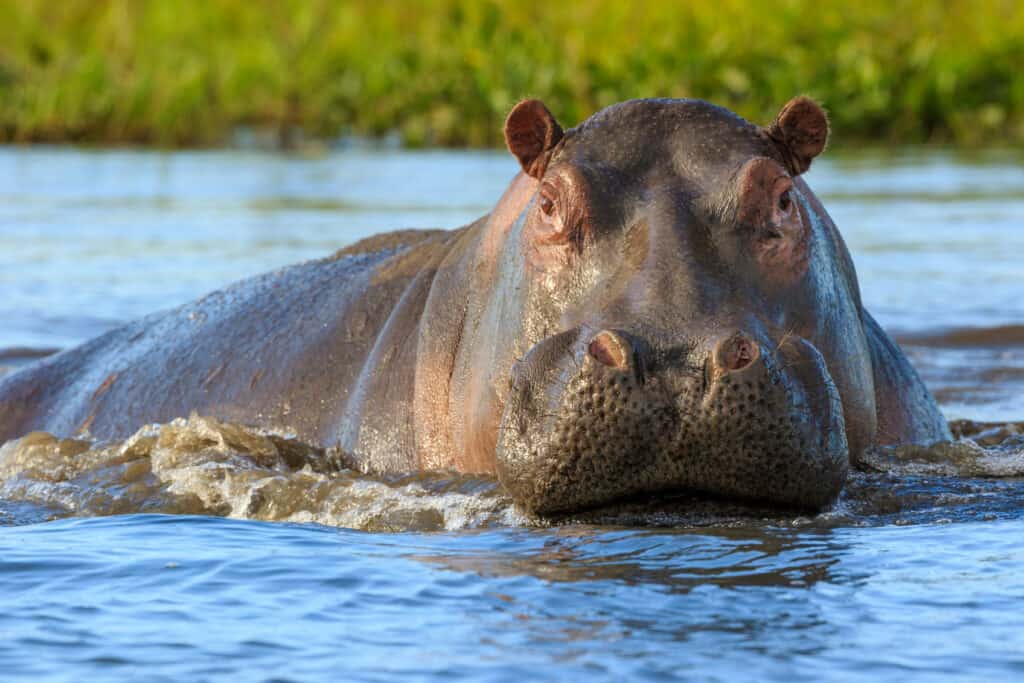
The hippo can run up to 30 miles per hour.
©Radek Borovka/Shutterstock.com
Hippopotami (Hippopotamus amphibius) of the genus Hippopotamus are located in Africa. These enormous beasts are not the cuddly and adorable animals that we will see as stuffed animals at zoo gift shops. There are approximately 148,000 hippos left. This leaves their conservation status to be considered very vulnerable.
The hippopotamus is a mammal that weighs anywhere from 2,200-9,900 pounds (1-4.5 tons). In addition to this enormous weight, they also can reach anywhere from 6.5 to 16.5 feet in length. Making these animals ones that are not easily taken down in the least. The biggest threat to their existence is not other animals looking to take them down. But rather hunting and habitat loss.
Hippos are herbivores. According to the Australian Museum, an herbivore is “an animal that only eats vegetation, such as grasses, fruits, leaves, vegetables, roots, and bulbs. Herbivores only eat things that need photosynthesis to live. Some parasitic plants that feed on other plants are also considered herbivores.”
Zebra (Equus zebra, Equus quagga, Equus grevyi) Facts
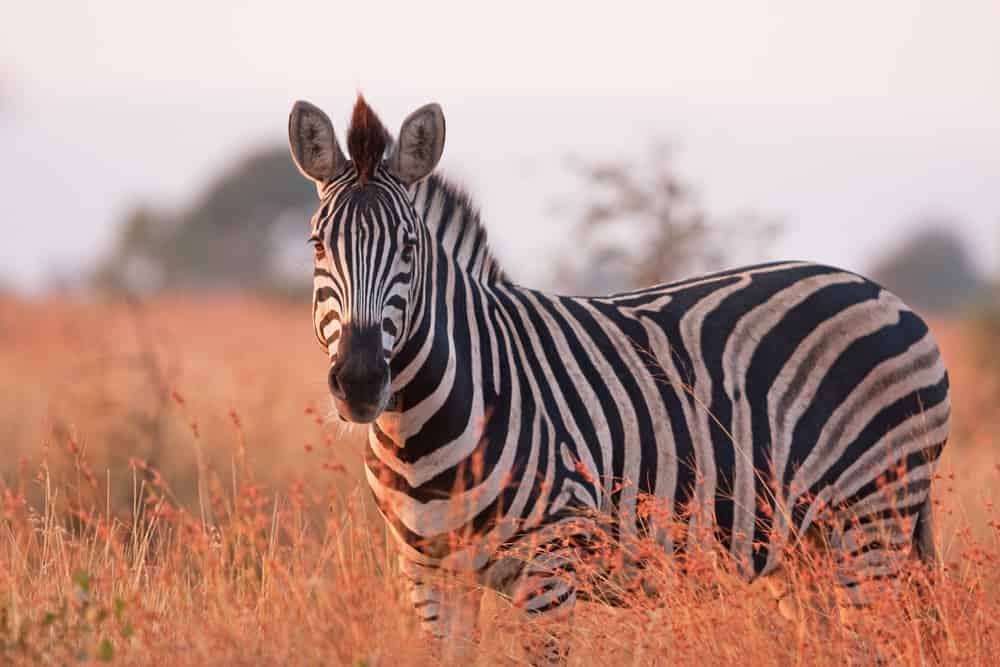
The zebra can run up to 40 miles per hour.
©Martin Prochazkacz/Shutterstock.com
Zebras (Equus zebra, Equus quagga, Equus grevyi) of the genus Equus are located just around Africa. So, these large mammals make for a predator’s dream meal in the wild. It is estimated that there are 150,000-200,000 left. Even though these numbers seem quite large, it is not. And their conservation status is considered to be endangered.
The zebra is a mammal that weighs anywhere from 386-992 pounds (175-450 kilograms). They also can reach anywhere from 6.6-9 feet (2-2.75 meters) in length. These beasts are not easy in the least to take down; however, each of Africa’s predators would count themselves lucky to have one to eat.
Zebras are herbivores, just like hippos are. And as such, they will eat things such as grass, leaves, bark, and shrubs. According to the African Wildlife Report, they state that zebras can spend as much as 19 hours out of the day just grazing and eating grass.
In addition to the aforementioned animals, there are a variety of others that will also prey on zebras. Animals such as hyenas, wild dogs, and lions will also enjoy hunting and eating them.
So, there are only two questions that remain at the end of this article. Which safari option seems right for you? And which of the big nine do you want to see first?
The photo featured at the top of this post is © GoodFocused/Shutterstock.com
Thank you for reading! Have some feedback for us? Contact the AZ Animals editorial team.







